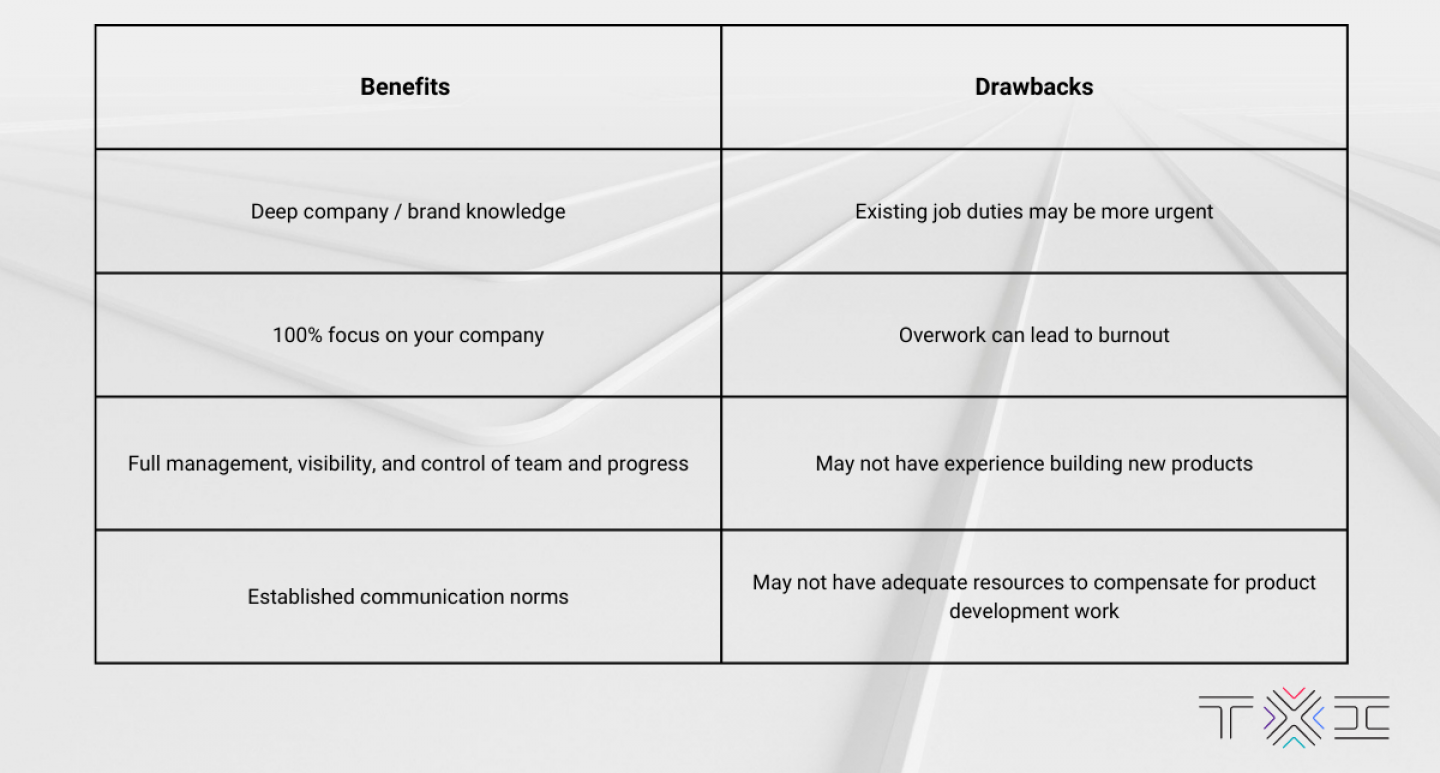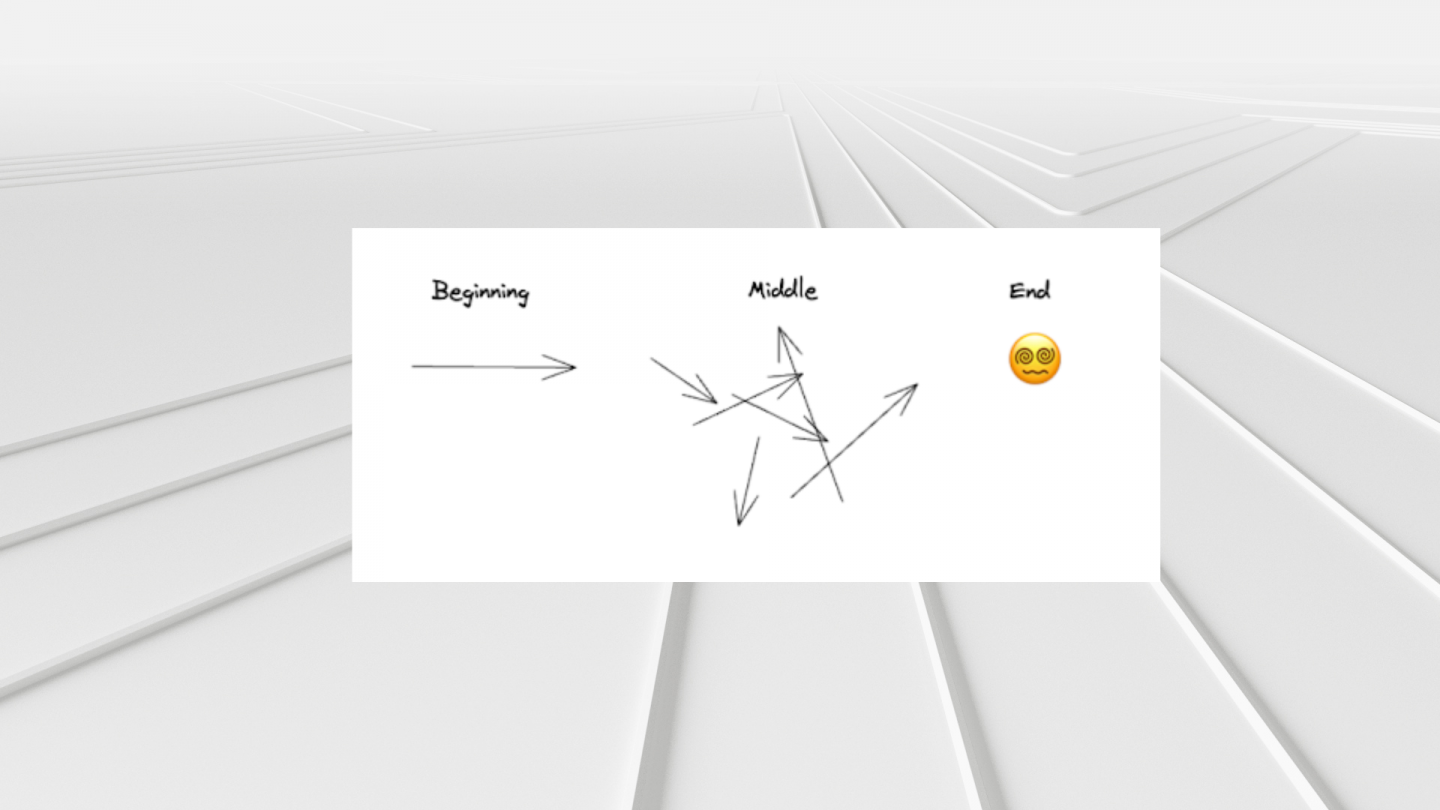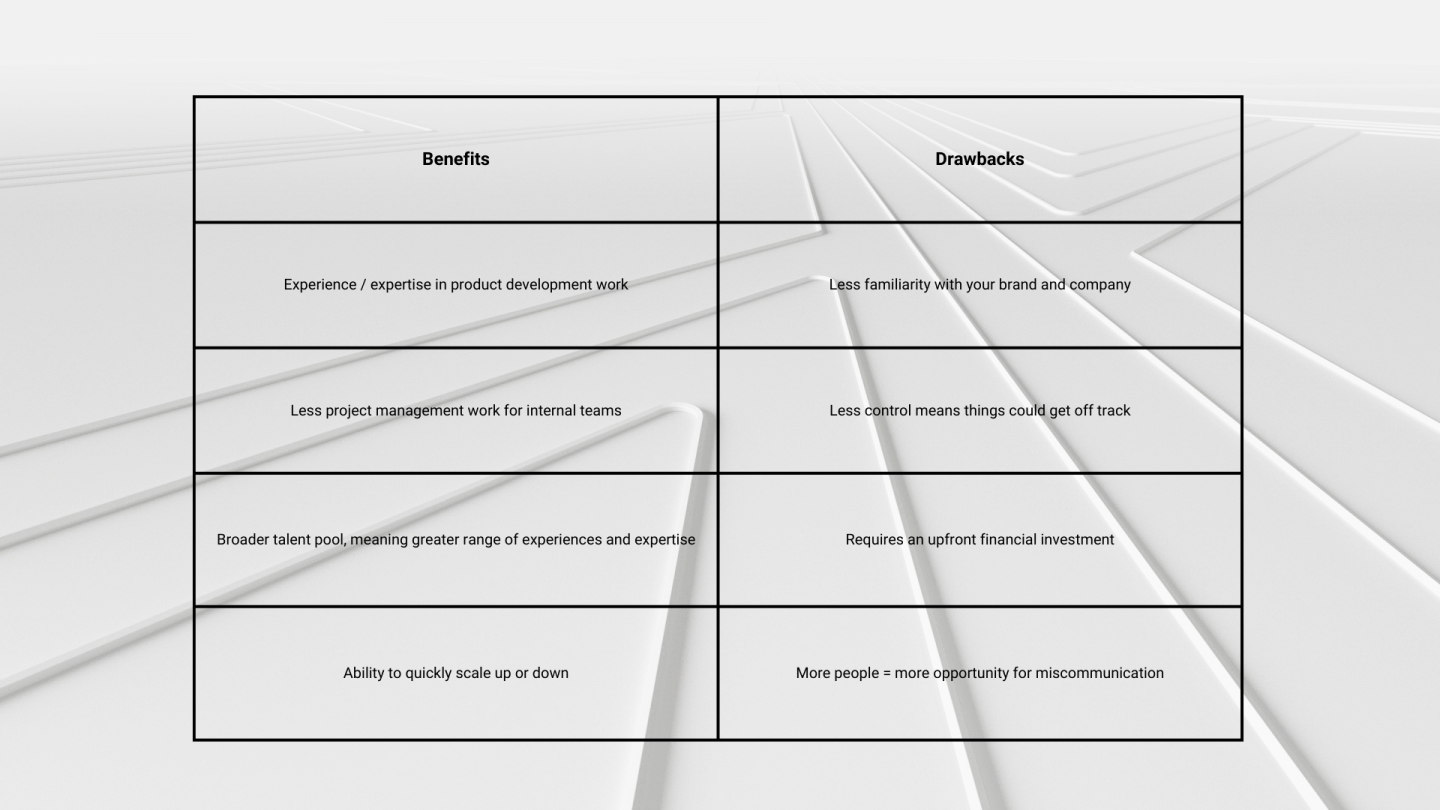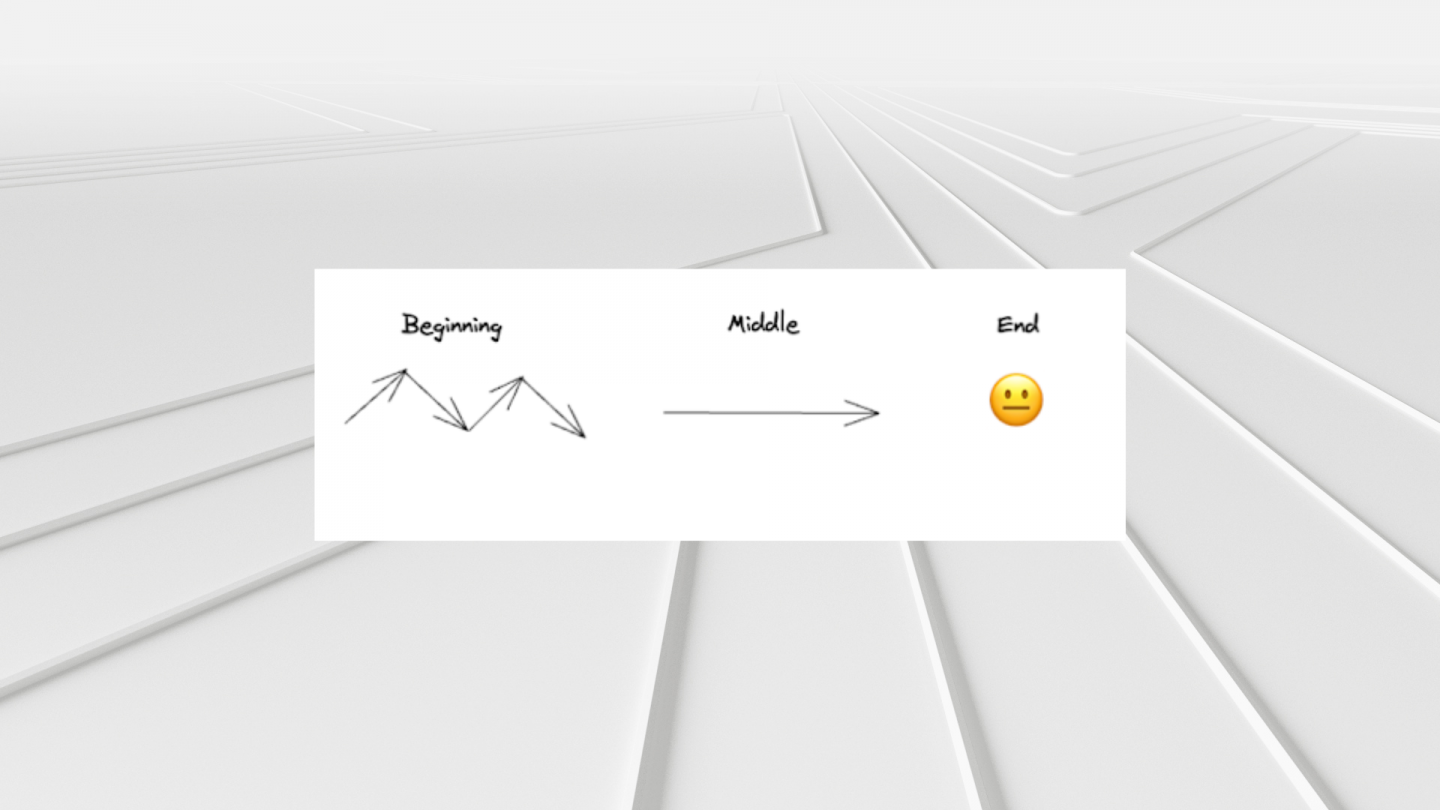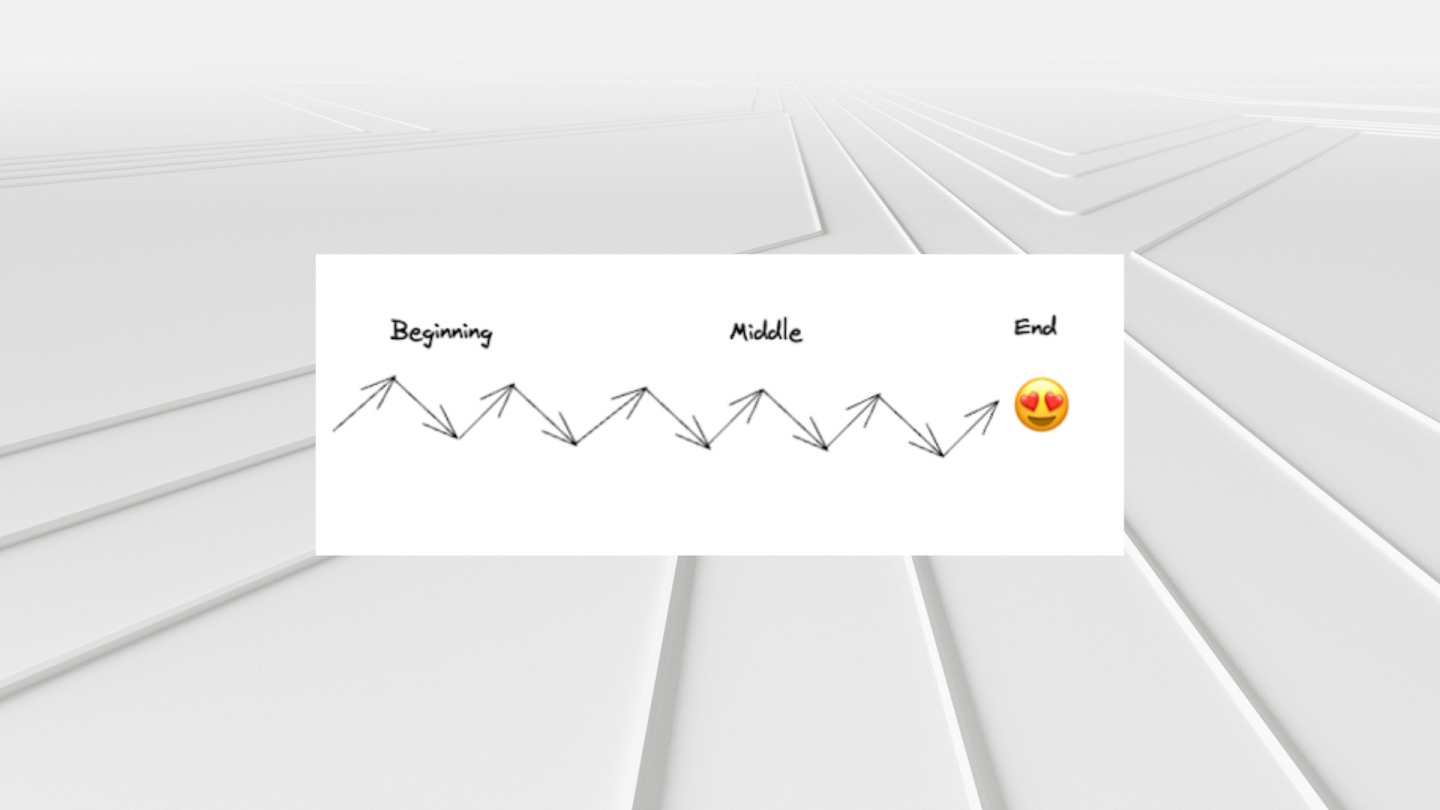Again, there's no clear “best” option between having an in-house team build a new product and outsourcing to a product development company. But there is a third option that business leaders should consider: taking a hybrid approach. Let’s take a look at how a hybrid model can help manage the risks associated with both in-house product teams and third-party providers.
The hybrid approach: combining in-house and external product development teams
A hybrid approach to product development helps minimize the riskiest parts of both the in-house and third-party models. To understand how, let’s take a look at how hybrid product development engagements might function.
Scenario 1: External consultant guiding an in-house product team
In this scenario, your organization brings in a product development consultant to guide your in-house team through the process of developing a new product.
This solves for one of the biggest risks of relying solely on an in-house team: that in-house teams may not know how to do product development work. An experienced consultant can not only guide your in-house product team through the project at hand but also help upskill that team more generally so they’re equipped to do more product development work in the future.
It can also help ease the potential communication issues that sometimes arise when working with a third-party team. Adding just one new person to your workflow is simpler and easier than adding many, meaning there's less likelihood that this setup will lead to miscommunications.
What this model doesn’t address is the bandwidth issue: even with product development leaders who have years of experience, your in-house team may still have too much work to do to dedicate adequate time to their product development work.
One thing that can help: setting individual and team performance expectations that incorporate product development outcomes.
Scenario 2: Product development company serves as staff augmentation
Another common scenario is where the product development firm’s team serves as temporary members of your staff.
This model can help derisk product development by…
Keeping control in your hands.
Expanding your team’s expertise and experience.
Preventing overwork and burnout.
Making it easy to scale up or down.
On the other hand, new team members will require onboarding to learn your brand, company values, and communication norms.
Maybe the bigger risk, though, is that if you yourself don’t have experience leading product development efforts, you may not be able to provide the guidance necessary to develop a truly innovative new product––that is, one that delivers real value and wins wide adoption among your users.
If that’s the case, staff augmentation from a product development company can translate to an ever bigger waste of resources than attempting product development in house.
Scenario 3: Full collaboration between in-house and external teams
In this model, an in-house team and a team from a product development company work together in a fully integrated way, meaning professionals of various disciplines (design, development, and delivery) collaborate throughout the process. The main disadvantage to this model is that it requires an upfront financial investment.
For more complex projects, though (including those where the ideal outcome is unknown at the outset), an integrated team approach is actually more efficient and cost effective than a siloed approach.
What's more, this setup is uniquely positioned to minimize the other risks involved in product development. Here’s why:
Expertise and experience at every level: Full team integration means you can bring in experienced, leadership-level people from the product development company. This removes the burden of project management from you and puts it on people who know how to do it.
Visibility and accountability at every step: Fully hybrid teams include your employees, which means there's no risk of an agency “going rogue” on your vision. What's more, full team integration usually involves regular “stand up” meetings with all stakeholders, so you’ll be apprised of progress at every step and able to ask questions if and when a team’s direction doesn’t make sense.
Access to brand and company experts: Working side by side with your company’s employees is a great way for product development teams to absorb brand and company values. And when there's a question, the close working style means anyone can ask and get an answer quickly.
It’s worth noting, though, that not every product development company is equipped to work fully integrated with in-house teams. To evaluate whether product development partners have the capability to deliver this kind of service, be sure to ask the following questions.
Questions to ask your product development partners
If you think a hybrid approach to product development might make sense for your company, these questions can help you identify a partner who’s equipped to deliver an integrated, fully hybrid approach.
What's the smallest version we can test? Effective product development is iterative. No product development company, no matter how skilled or experienced, can predict how a product will perform. The most effective firms acknowledge this and have rapid prototyping strategies for identifying the smallest workable version of an idea (aka the MVP), building that in a low-cost way, and testing it to assess viability. This is the “fail fast” approach in action: rather than selling you a fully formed vision, they’ll offer you an approach to get you to valuable insights and, ultimately, successful products.
How will you derisk this project at every step? One of the most expensive mistakes an organization or small business can make is to build a product that nobody uses. But how can you know before you build something whether people will use it? The best product development companies will have a plan for this – which typically includes getting input from end users at every step, building an MVP, and iterating gradually.
How will you determine what the “right” thing to build is? This is a variation on the question above. Derisking essentially means making sure you’re not investing time and money in the wrong thing. The “right” thing to build exists at the intersection of what users want, what is technically feasible, and what is viable from a business perspective. In addition to getting user input, product development teams should have a plan for bringing in business and technical stakeholders early on and throughout the engagement.

